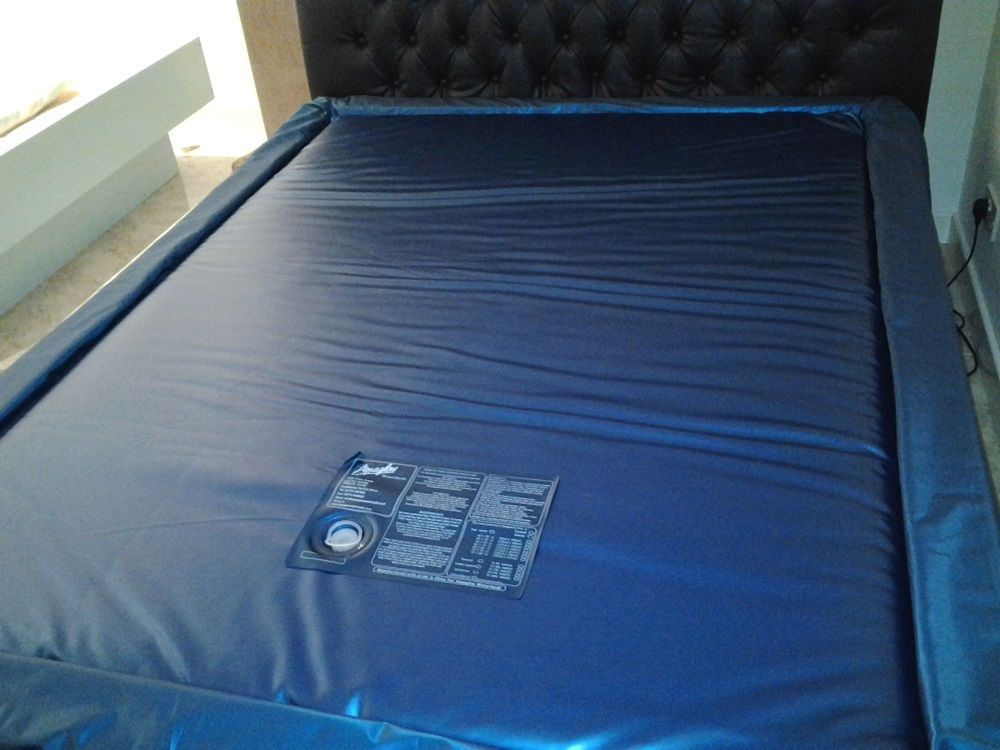How to Choose and Maintain a Water Bed in Nigeria – A Comprehensive Guide
How to Choose and Maintain a Water Bed in Nigeria – A Comprehensive Guide
A water bed is a unique and luxurious sleeping experience. It offers unparalleled support and comfort, as well as improved circulation and pressure relief. In Nigeria, where the climate can be very hot and humid, they can provide an especially beneficial sleeping environment. Whether you’re a first-time buyer or you’ve had a water bed in the past, it’s important to know how to choose and maintain one. This comprehensive guide will walk you through the entire process, from selecting the right bed to keeping it in top condition. You’ll learn about the different types of water beds available, the materials to look for, the benefits and drawbacks of each, and how to properly care for and maintain your bed for years of use. So, if you’re looking for a comfortable and supportive sleeping experience, read on to find out how to choose and maintain a water bed in Nigeria.
Types of water beds
There are two types of water beds: innerspring and foam. Innerspring water beds use traditional innerspring construction, while foam water beds use polyurethane foam construction. Innerspring water beds have the traditional feel of a traditional mattress, while foam water beds are more modern, with a very different feel. Because of this, it’s important to know what type of water bed is right for you. It’s also important to note that the materials and construction of the bed will dictate its price and lifespan. A high-end, innerspring water bed can cost upwards of $3,000, while a foam water bed may only be $500 or less. Waterbeds also come in two shapes: regular and queen. Regular water beds are six feet long and fit in a regular-sized bed frame. Queen water beds are six feet, six inches long and fit in a queen-sized bed frame. If you have a king-sized bed frame, queen water beds may also fit in that frame.
Selecting a water bed
When it comes to selecting a water bed, the first and foremost thing you’ll want to do is decide which type of bed is right for you. If you’re not sure, talk to a water bed expert at a retailer and ask them what type of bed might be best for you based on your needs and sleeping style. You’ll also want to consider the following factors when selecting a water bed. Size – You’ll need to make sure that the bed you select is the right size for your room and bed frame. You’ll also want to make sure that the bed is the right size for your sleeping partner or that you have enough room for two or more people. Weight capacity – You’ll also want to make sure the bed you select has a high weight capacity. Most water beds have a 400-pound weight capacity, but there are some that go as high as 800 pounds. If you weigh more than 400 pounds, you may want to opt for a bed with a higher weight capacity. Budget – Finally, you’ll want to make sure you select a water bed that fits within your budget. While a water bed can be an investment due to its durability, it can also be expensive. It’s important to set a budget and try to stay within it so you can get a bed that is right for you without breaking the bank.
Benefits of water beds
There are many benefits to owning and sleeping on a water bed. Many people find them extremely comfortable, offering superior support and pressure relief. Water beds also help improve circulation, as the water helps keep your blood flowing and your muscles relaxed. They can also help those who suffer from allergies, as they are anti-allergen, anti-dust mite, and anti-bacterial. They can also be beneficial for those who have medical conditions, such as arthritis, fibromyalgia, and back pain. Finally, water beds can help conserve energy and reduce your carbon footprint. They are cooler than traditional mattresses, so they can help reduce your energy bills and keep you cooler during the summer months.
Drawbacks of water beds
There are a few drawbacks to owning and sleeping on a water bed. First, they can be quite expensive. A high-end water bed can cost upwards of $3,000 or more. They also aren’t great for those who like to move around in their sleep. Since the water moves around with you, it can make it difficult to adjust positions. Finally, water beds are difficult to move and can be difficult to transport.
Materials to look for
If you’re in the market for a new water bed, there are a few qualities to look for when selecting a bed. First, you’ll want to make sure it’s made with high-quality materials. You don’t want a bed made of cheap, low-grade materials that will wear out quickly and be a hassle to maintain. You also want to make sure that the bed you purchase features an anti-burst valve. This valve will help prevent leaks and keep the water in the bed where it belongs. Finally, you’ll want to make sure that the bed you purchase features sturdy construction to support you and your sleeping partner. Look for a bed made with a high-quality innerspring or durable foam. You’ll also want to make sure that the bed you purchase has a high weight capacity, as larger people may exceed the limit of lower-quality water beds.
Setting up the bed
Before you set up your water bed, you’ll want to make sure it is completely clean. You can purchase a bed-cleaning kit at most retailers. You can also hire a professional cleaning service to clean your bed. Once your bed is clean, you can begin setting it up. You’ll start by adding water to the bed. You’ll want to add the correct amount of water to ensure the bed feels comfortable but not too soft. Most water bed owners recommend adding 10 gallons of water for each queen-sized bed, 8 gallons for each king-sized bed, and 6 gallons for each regular-sized bed. Once you add water to the bed, you’ll want to let it sit for 24 hours before laying on it. This is to allow the water in the bed to settle and ensure it is in the correct position. After 24 hours, you can begin laying on the bed.
Maintaining the bed
Like most things, the key to maintaining a water bed is cleaning. You’ll want to clean your water bed regularly, both to extend its lifespan and to maintain optimal comfort. You can clean your water bed using a water bed cleaning kit, a water bed solution, or a water bed sanitizing kit. You should clean your water bed at least once per month, but it’s best to clean it once a week. You’ll also want to make sure that you maintain the water in your bed. This will help extend the life of your bed and keep it clean. You can do this by adding water to your bed as needed. Depending on how often you use your bed, you may need to add water once a week or once every two weeks.
Cleaning and caring for the bed
As mentioned above, you’ll want to clean your water bed regularly to extend its lifespan and maintain optimal comfort. You can clean your water bed with a water bed cleaning kit, water bed solution, or water bed sanitizing kit. It’s also a good idea to change the water in your bed once a month to keep it clean and fresh. You’ll also want to make sure that you change the water in your bed if you use a water bed warmer. Finally, you’ll want to make sure that you have a bed frame that can support a water bed. You’ll also want to make sure that you don’t use a water bed if you have small children, as it can pose a drowning hazard.
Conclusion
If you’re looking for a luxury sleeping experience, a water bed may be the perfect choice for you. They offer unparalleled support and comfort, as well as improved circulation and pressure relief. When selecting a water bed, you’ll want to make sure that it is made with high-quality materials and has a durable construction to support your weight. You’ll also want to make sure that the bed you select has a high weight capacity, as larger people may exceed the limit of lower-quality water beds. Once you set up your water bed, you’ll want to clean it regularly






LEAVE A COMMENT
You must be logged in to post a comment.